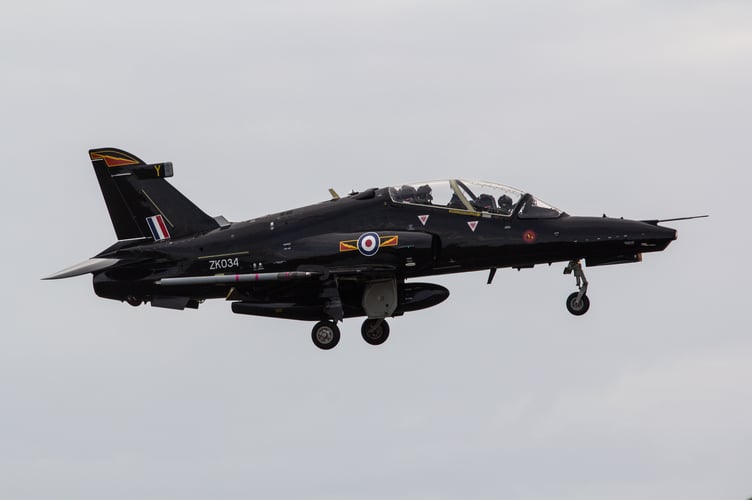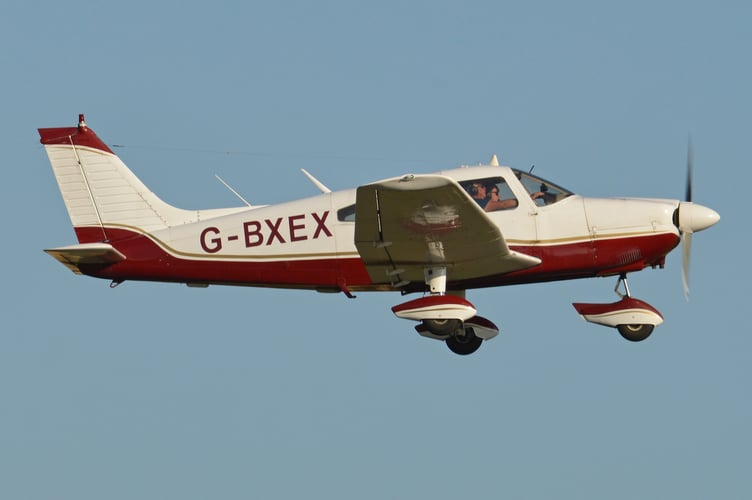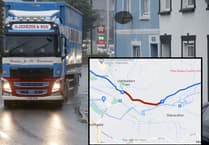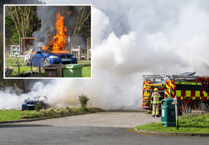A MILITARY jet came within 500 feet of a civilian aircraft near Corris, a report by air safety inspectors has said.
A report published by the UK Airprox Board states that on 21 September last year, a Hawk T2 jet passed 500-800 feet beneath a civilian PA28 aircraft travelling in the opposite direction along the Mach Loop area near Corris, with ‘minimal lateral separation’.
The Hawk pilot noted that the civilian aircraft was around the corner of a valley and therefore they had no way of seeing it any earlier than they did. The Hawk pilot stated that they were flying at 1,800 feet at the time of the incident. The pilot assessed the risk of collision as ‘medium’.
The pilot of the civilian PA28 aircraft is an experienced former RAF pilot and current airline pilot, assessed the risk of collision as ‘low’.

The Airprox board concluded that the incident was a category C, which means there was not a risk of collision.
The board concluded that even though the Hawk pilot saw the PA28 at a very late stage, and was no doubt startled by its presence, the risk of collision was low owing to the existing vertical separation.
The report stated: “I was apparent that although the PA28 pilot had reported visual sighting at a range of two nautical miles, the Hawk pilot had only seen the PA28 at about CPA, effectively a non-sighting [CF5].
“Some members felt that the closing speed was such that safety had been compromised but after further discussion it was decided that vertical separation at CPA, although far from desirable, was such that collision had been averted; the PA28 pilot was able to assess the closing vector and decided that no action was required.”
Members reiterated that the air space along the Mach Loop is available to all users but questioned the wisdom of choosing to fly a civilian aircraft along a military flow arrow on a weekday, and at a low level, for leisure purposes.
The investigation found there were communication difficulties and problems sighting each other until very late on due to them being in an "area of very high terrain which can block VHF,TCAS/ADS transmissions and visual sightings for aircraft operating at low level."

In assessing the effectiveness of the safety barriers associated with this incident, the board concluded that the key factors had been that:
Tactical Planning and Execution was assessed as partially effective because the PA28 pilot elected to transit along an area of known high intensity fast-jet traffic and at an altitude such that EC and communication were compromised by the high ground.
Situational Awareness of the Conflicting Aircraft and Action were assessed as ineffective because neither pilot was aware of the proximity of the other aircraft until sighted.
Electronic Warning System Operation and Compliance was assessed as ineffective because the Hawk TCAS warning only occurred at a late stage due to terrain masking.




